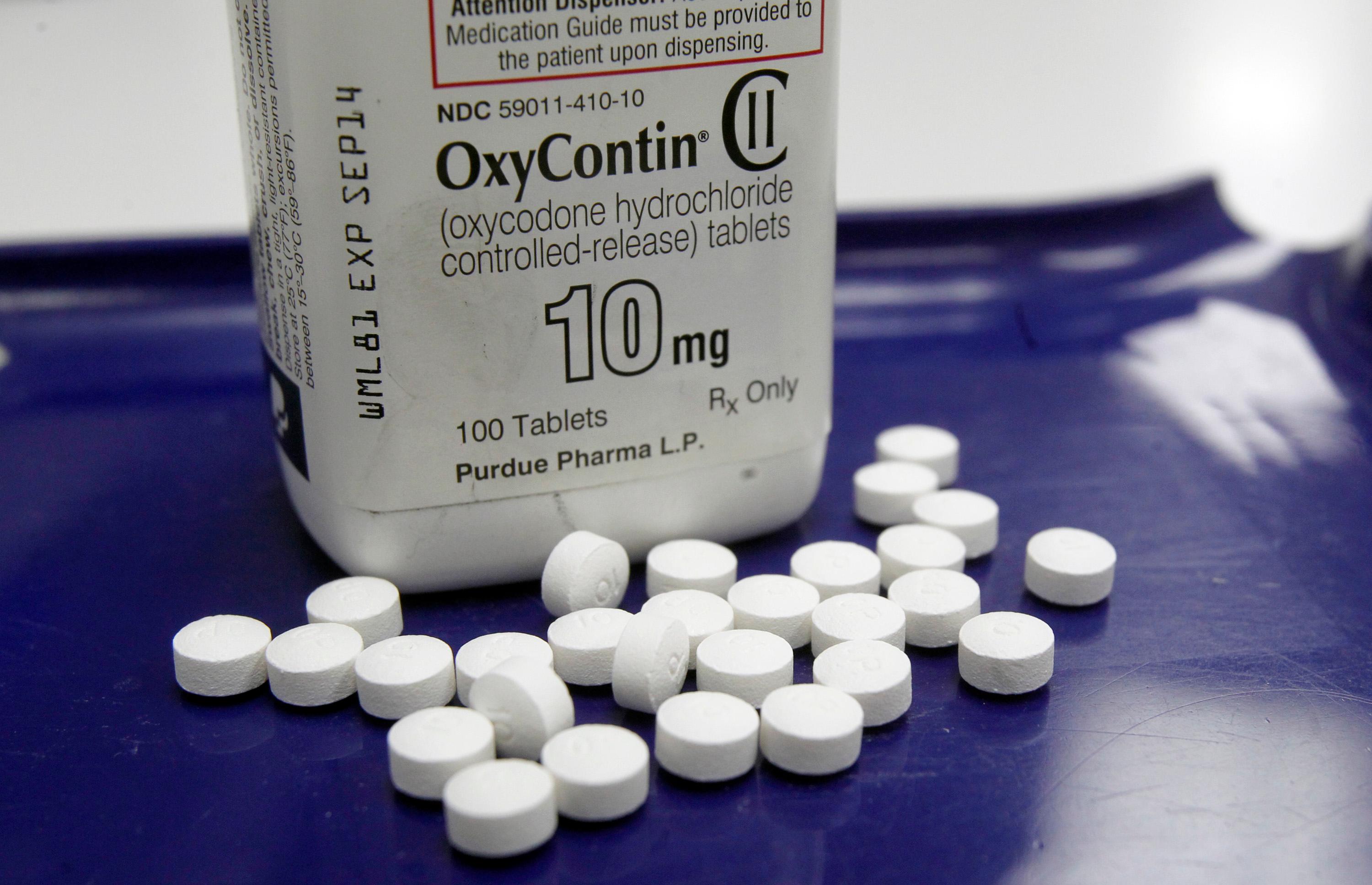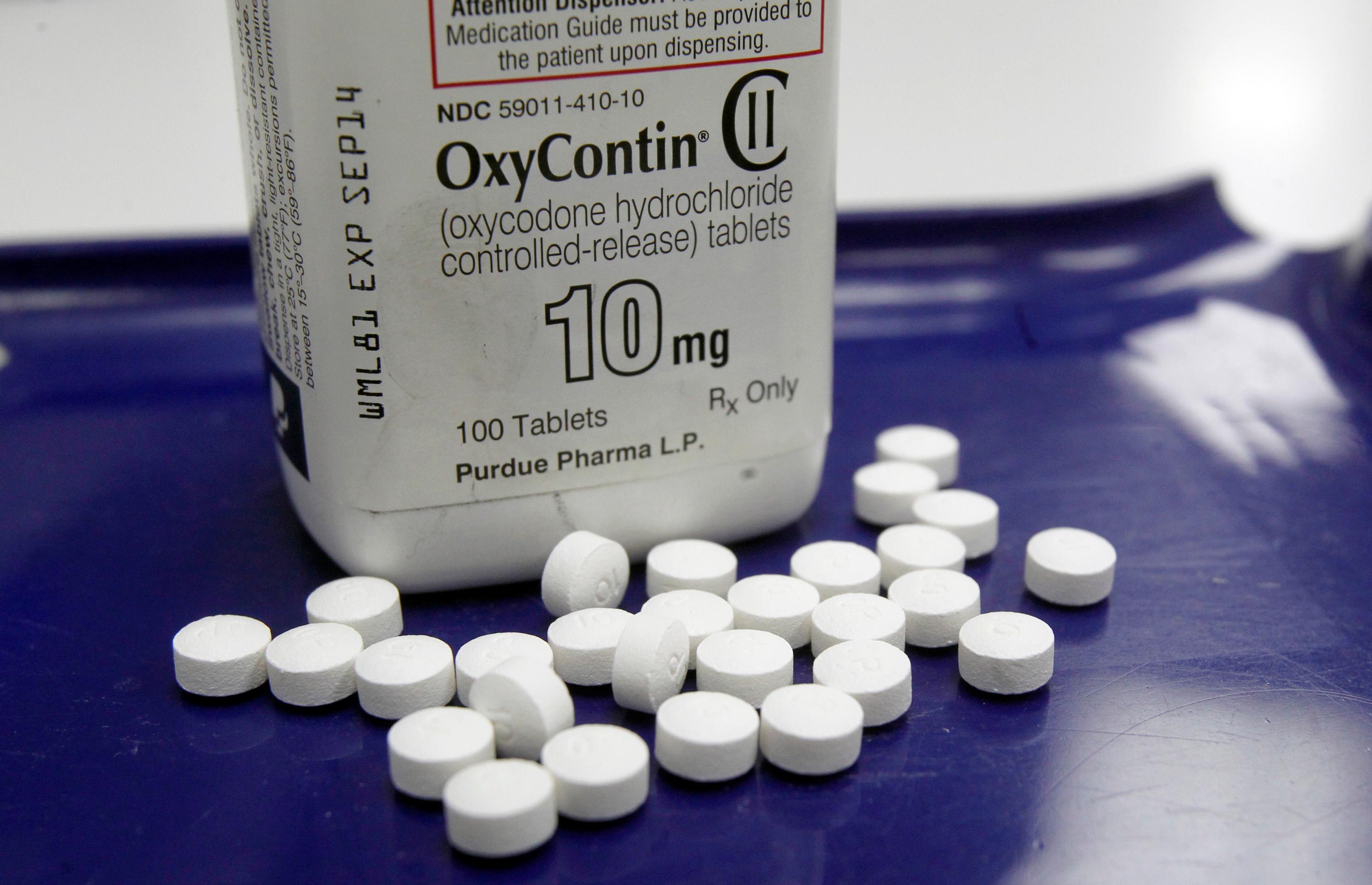

The sales rep for one of America's most prominent opioid manufacturers walked out of a Wheat Ridge pain clinic in May 2010 and couldn't help but notice something odd.
"(M)ost patients were young and particularly healthy looking," he wrote in a note on the visit.
Reps from Purdue Pharma were hardly unfamiliar with Dr. Kevin Clemmer's clinic. They had been there 94 times before in the previous four years — a rate of nearly twice a month — mostly to sell their blockbuster opioid painkiller, OxyContin, The Colorado Sun reported Thursday.
In the early years, Clemmer had been hesitant, saying he had concerns "about doing this because of abuse and diversion," according to a Purdue rep's note quoted in a newly unsealed court document. But, after Purdue representatives paid him roughly 60 visits, Clemmer warmed up to OxyContin, telling a representative that he liked prescribing the drug because Purdue coupons made it inexpensive, according to the court document.
When a Purdue representative visited Clemmer's clinic in April 2010 to ask about an apparently forged prescription from Clemmer, the representative made sure to leave behind more OxyContin coupons. A month later came the May 2010 visit, where a Purdue representative was again looking into a pharmacy's concern that the opioid prescriptions coming out of Clemmer's clinic were not legitimate.
Clemmer, who had faced previous discipline for his narcotics prescription practices, told the rep that he was following the rules. The rep, despite his observation about Clemmer's patients, gave Clemmer a resource guide "on how to protect his practice," according to the rep's note.
That day was the 95th and final visit Purdue reps paid to Clemmer.
Three months later, one of Clemmer's patients overdosed and died. A year-and-a-half later, Clemmer's medical license was revoked. Three years later, Clemmer pleaded guilty in federal court to illegally distributing OxyContin — with at least three deaths linked to his clinic and Colorado's opioid epidemic now raging.
Federal law requires drug companies to inform the DEA when they notice suspicious orders or prescribing patterns. But, all along, Purdue representatives said nothing, a lawsuit brought against the company by the Colorado Attorney General's Office alleges.
"Purdue never reported any of these red flags about Dr. (Clemmer's) practice to state or federal law enforcement in Colorado," the lawsuit's complaint states.
Five-hundred-sixty people died last year in Colorado from opioid overdoses.
Even after massive efforts by doctors and hospitals to change their prescribing patterns and by state officials to make opioid treatment and overdose reversal drugs more available, opioids still accounted for most of the 1,012 drug overdose deaths in 2017. That is the largest number of people killed by overdoses in a single year in Colorado history.
The attorney general's lawsuit provides a never-before-seen account of how part of the epidemic began, told through the notes of Purdue sales representatives who methodically pursued, encouraged and manipulated Colorado doctors to set aside their concerns about addiction and to prescribe higher and higher doses of potentially deadly drugs, according to the lawsuit's complaint.
"Purdue unleashed a surge of prescription opioids on Coloradans while hiding the facts about their drugs' addictive properties," Colorado Attorney General Cynthia Coffman said in a statement when the lawsuit was filed last month. "Their corporate focus on making money took precedence over patients' long-term health, and Colorado has been paying the price in loss of life and devastation of its communities as they struggle to address the ongoing opioid crisis."
Colorado is at least the 28th state to sue Purdue Pharma over the opioid crisis. The lawsuit's 96-page complaint was originally filed under seal but was recently made public.
Reached for comment on the lawsuit, a Purdue spokesman sent this statement to The Colorado Sun:
"We vigorously deny the state's allegations. The state claims Purdue acted improperly by communicating with prescribers about scientific and medical information that FDA has expressly considered and continues to approve. We believe it is inappropriate for the state to substitute its judgment for the judgment of the regulatory, scientific and medical experts at FDA. We look forward to the opportunity to present our substantial defenses."
The spokesman also provided a chart from the federal Food and Drug Administration showing that OxyContin accounts for only about 2 percent of the roughly 200 million opioid prescriptions dispensed per year in America.
"We share the state's concern about the opioid crisis," the Purdue statement said. "While Purdue Pharma's opioid medicines account for less than 2 percent of total prescriptions, we will continue to work collaboratively with the state toward bringing meaningful solutions to address this public health challenge."
The attorney general's lawsuit paints a picture of a company that cared little about its drugs' consequences.
Beginning in 2000, Purdue representatives or surrogates gave presentations extolling the benefits of OxyContin in Colorado, according to the lawsuit. They worked to ingratiate themselves into local medical professional associations, which the lawsuit alleges did not disclose connections to Purdue when testifying on opioid regulation.
The lawsuit cites numerous notes from sales calls made by Purdue reps and obtained by the attorney general's office.
By 2006, according to notes cited in the lawsuit, Purdue sales reps were encouraging doctors to prescribe higher and higher doses of OxyContin to compensate for doctors' observations that standard doses of OxyContin did not last the 12 hours Purdue claimed they would.
Doctors who had begun with relatively small doses — 10 or 15 milligrams, twice a day — soon were prescribing 80-milligram doses, after visits from Purdue reps.
During one sales call in Colorado, a Purdue rep wrote in a note, referring to the prescriber, "get her over fear of dosing too high."
And Purdue was aware of the financial incentive to push higher doses, the lawsuit alleges. The complaint cites a Purdue marketing presentation warning that a shift of 15,000 prescriptions from 20- or 15-milligram doses to 10-milligram doses represented a loss of $2 million.
"OxyContin is promotionally sensitive, specifically with the higher doses, and recent research findings reinforce the value of sales calls," Purdue's business plan stated, according to the lawsuit.
Meanwhile, the lawsuit alleges that Purdue reps downplayed the risk of addiction. During one call in August 2006, a Purdue rep discussed with a Colorado doctor, "addiction in clinical issues to show how rare(ly) it occurs in pain (patients) to alleviate concerns."
Purdue invented the concept of "pseudoaddiction," according to the lawsuit — a condition that supposedly looked like addiction but that Purdue claimed was actually a sign of patients being undertreated and needing higher doses of opioids. During a May 2006 call, a Purdue rep noted discussing pseudoaddiction with a Colorado prescriber.
"He admitted he has a hard time identifying these patients," the rep noted, according to the lawsuit.
In 2010 — a year in which more than 200 Coloradans died from prescription opioid overdoses — a Purdue rep noted a visit with a Colorado doctor in which the doctor said, "many (patients) have (a) fear of getting addicted if they go on (OxyContin)."
"I told him," the rep noted, according to the lawsuit, "that if (patients) are fearful of addiction they will probably be good when taking (OxyContin) and convince them you would not prescribe any product that would lead to major problems."
Purdue's marketing push began paying off handsomely for the company as early as 2006. More than 2.9 million opioid prescriptions were written in Colorado that year — including 15,000 for OxyContin. That year, 1.3 million tablets of OxyContin flowed into the state.
But it only increased from there. By 2012, at the peak of opioid prescriptions in Colorado, doctors wrote nearly 3.9 million opioid scripts — enough for nearly three-quarters of the state's residents to get one. About 123,000 of those were for OxyContin; 8.3 million tablets of OxyContin landed in Colorado hands that year.
The lawsuit portrays Purdue's marketing force as relentless in its pursuit of OxyContin sales. Doctors were visited dozens of times a year. Sales reps focused on specialty pain-management physicians but also family-practice doctors who were less experienced in treating pain.
In one visit with a Purdue rep in 2013, a Colorado medical provider said she was going to stop treating chronic pain patients. The Purdue representative responded by saying she was not telling the provider she should specialize in pain, "it's just that pain is one of (the) main reasons patients come to (the doctor)," according to the sales rep's notes quoted in the lawsuit.
When the provider insisted that she wasn't going to treat any new chronic pain patients, the sales rep said, "What are you going to do when (a) current patient develops (a) pain condition? . Let me show you what some of your peers are doing," according to the lawsuit.
And, at least for some doctors, these tactics had an impact on their prescribing practices.
The lawsuit cites an instance from 2006 when a provider who rarely wrote high-dose prescriptions for OxyContin said she was "freaked out" by a patient who had been referred to her and who was on a 480-milligram dose of OxyContin every 12 hours. The Purdue rep responded by saying there was no "ceiling dose and end organ damage with OxyContin," according to the rep's notes quoted in the lawsuit.
In the five years prior to that interaction, according to the lawsuit, the provider had written only 17 prescriptions for more than 60 milligrams of OxyContin. But that visit kicked off a sharp increase in the provider's dosing. The next year alone, in 2007, the provider wrote another 17 high-dose prescriptions. In 2010, the provider wrote 102 high-dose prescriptions.
What changed? During the four-year stretch between 2006 and 2010, Purdue reps visited the provider 108 times, or more than twice a month, according to the lawsuit.
To some patients, the doctor was known as "Candy Man."
By the time the doctor was arrested and sentenced in 2017 to eight years in federal prison for illegal narcotics distribution, Purdue sales reps had visited his clinic dozens of times — and apparently never alerted authorities to any suspicions about the doctor's prescribing patterns.
"Upon information and belief, Purdue rarely, if ever, reports suspicious opioid prescribers to federal or state authorities in Colorado," the lawsuit alleges.
This may be the lawsuit's most explosive claim. Even in cases where doctors were breaking the law or violating medical ethics, such as with Clemmer or "Candy Man," the lawsuit alleges that Purdue didn't step in to stop them.
In the case of "Candy Man," the lawsuit refers to the doctor only by the initials D.H. But the details included in the complaint make clear the doctor was Douglas Hammond, who is now serving a sentence at a federal prison in southern Colorado.
Hammond, according to his plea agreement in the federal criminal case, admitted to "routinely" writing prescriptions to patients for more than 300 oxycodone tablets a month. Many of those pills were later diverted into illegal sales, according to state and federal court documents.
One patient of Hammond's stood out in particular, though.
When Eddie Brantner first visited Hammond's clinic in December 2010, according to the lawsuit and plea agreement, he received 60 80-milligram OxyContin tablets and 180 15-milligram oxycodone tablets without even having to produce medical records — just a story about a hiking accident some years prior. At Brantner's next visit, a month later, Hammond upped the dose. Two weeks later, Hammond prescribed even more opioids.
By April 2011, Hammond had Brantner on 180 40-milligram OxyContin tablets and 600 30-milligram oxycodone tablets. And the next month, Hammond and his physician assistant upped the dose again, to 900 30-milligram oxycodone tablets for just one month, according to the plea agreement.
Brantner was only taking some of the pills and was giving the rest to an illegal pill-distribution ring, the plea agreement states. But his prescriptions didn't occur in a vacuum, either.
According to the attorney general's lawsuit, Purdue reps had visited Hammond 69 times in the two years prior to Brantner's first prescription. At Purdue's last visit to Hammond, a sales rep talked to the doctor about potent opioid patches for high-dose patients, and the rep assured Hammond that "there is no ceiling dose as long as the patient can tolerate the side effects," according to the lawsuit
That was on June 13, 2011.
The next day, according to court records, Brantner overdosed and died at the age of 34.









